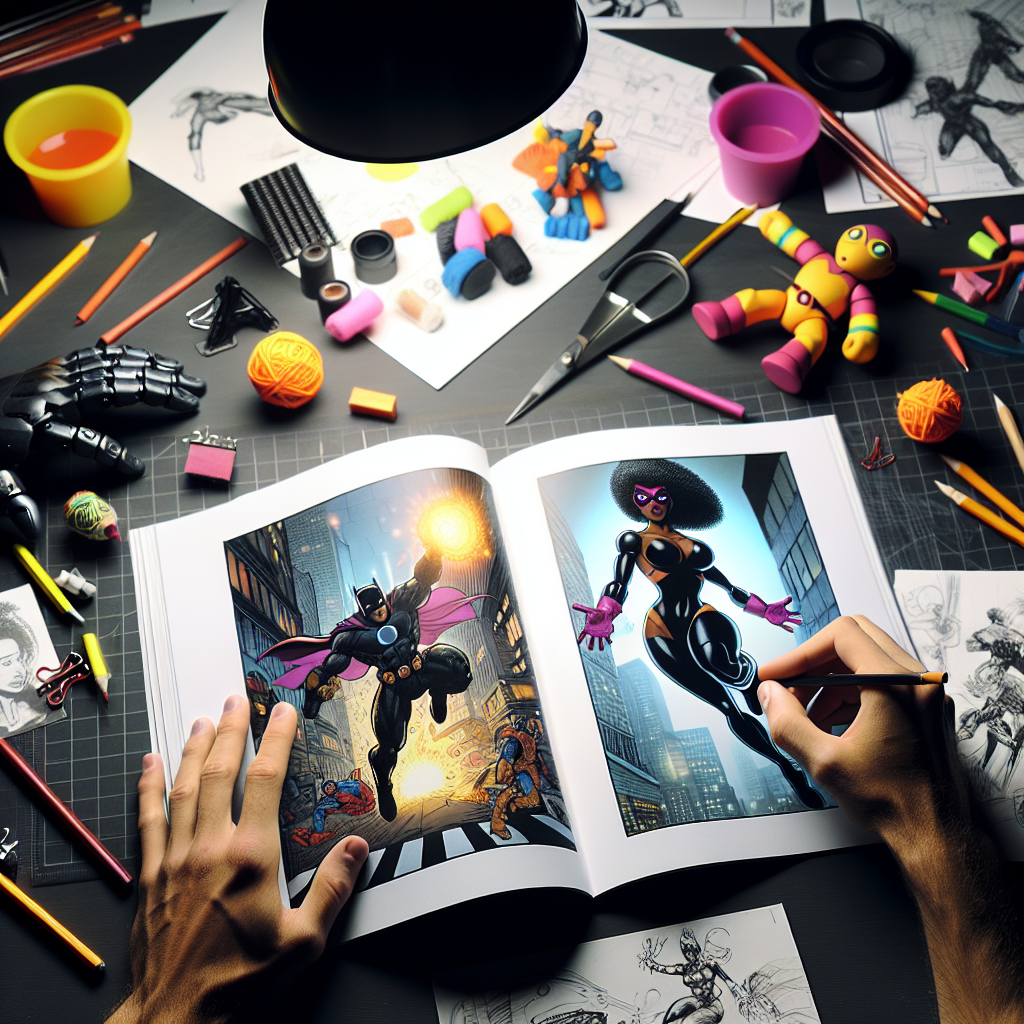A Breakdown of the Manufacturing Process: From Concept Art to Production
The journey from an initial idea to a finished product is often complex, involving various stages and a wide array of materials. This post aims to explore the manufacturing process, focusing on the pivotal roles of design, materials, and production. Whether you’re a designer, manufacturer, or simply curious, understanding this process can offer valuable insights into the world of manufacturing.
Step 1: Concept Art
The manufacturing journey begins with concept art. This stage embodies the creative vision of a product. Designers utilize various tools, be it traditional sketching or digital software, to illustrate their concepts clearly. This detailed artwork helps to communicate the envisioned design and lays the groundwork for further development.
- Brainstorming Ideas: Designers often gather ideas through brainstorming sessions, sketching out multiple concepts.
- Creating Visuals: Using design software, artists will create detailed renditions of the concepts, which may include colors, dimensions, and textures.
- Feedback and Iteration: This stage often involves receiving feedback from stakeholders and making necessary adjustments to improve the design.
Step 2: Design Development
Once the concept art is finalized, the next step in the manufacturing process is design development. This phase involves refining designs to ensure they can be produced efficiently and effectively.
- Material Selection: A critical component, materials will influence not just the aesthetics but also the functionality and durability of the product. Common materials include plastics, metals, and composites.
- Technical Drawings: Designers create technical drawings that indicate all measurements and components, which serve as essential blueprints for production.
- Prototype Creation: A prototype is fabricated to evaluate the design in real-world scenarios. This process allows designers and engineers to identify any potential issues before mass production.
Step 3: Production Planning
After refining the designs and making prototypes, the focus shifts to production planning. This stage requires careful consideration of how to manufacture the product efficiently and economically.
- Manufacturing Techniques: Various techniques can be employed, including injection molding, CNC machining, or 3D printing, depending on the complexity and material of the product.
- Supply Chain Management: Identifying and securing reliable suppliers for raw materials is crucial. This is where sourcing materials for production becomes a significant factor.
- Quality Assurance: Establishing quality assurance standards ensures that the final product meets specifications and customer expectations.
Step 4: Mass Production
Once planning is complete, mass production can commence. This stage is where the vision becomes reality, and products are manufactured at scale.
- Setting Up Production Lines: The manufacturing team sets up production lines tailored for efficiency. This may involve recruiting skilled labor, training employees, and maintaining equipment.
- Manufacturing Process: Products go through various methods like molding, cutting, assembling, and finishing, depending on their design.
- Continuous Monitoring: During production, real-time monitoring ensures that everything runs smoothly and that problems are addressed promptly.
Step 5: Quality Control and Testing
Quality control is an essential step in the manufacturing process. It’s here that products are rigorously tested to ensure they meet the required safety and quality standards.
- Inspection: Each product undergoes physical inspections to catch any defects before packaging.
- Testing: Some products require specific testing (e.g., stress tests or electrical tests) to ensure they perform as intended.
- Feedback Loop: Any issues identified during quality control can lead to changes in future production runs.
Step 6: Packaging and Distribution
After successful testing and quality assurance, products are packaged for distribution. Packaging not only protects products during transit but also plays a significant role in branding.
- Designing Packaging: The packaging should complement the product design and appeal to target consumers. This includes labeling and branding elements.
- Shipping Logistics: Coordinating shipping and logistics ensures timely delivery to retailers or directly to consumers.
Conclusion
Understanding the manufacturing process from concept art to production provides insights into the intricate world of product development. Each stage—design, material selection, production planning, mass production, and quality control—plays a critical role in delivering a high-quality product to the market. By recognizing the significance of each part of this process, businesses can enhance their manufacturing capabilities and improve their bottom line.
The next time you engage with a product, take a moment to appreciate the advanced manufacturing processes that brought it from an idea to your hands. This thoughtful understanding can lead to better appreciation and innovation within your field.




